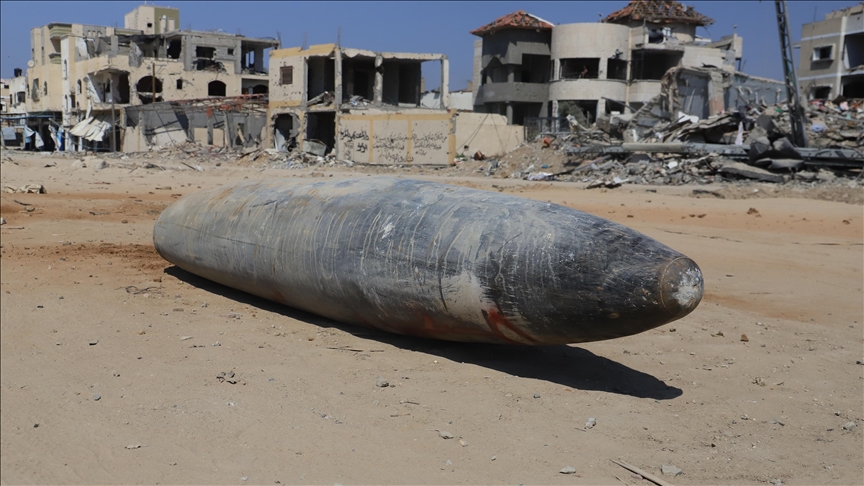GAZA, (PIC)
An Israeli report said that around 3,000 bombs dropped by the Israeli army on the Gaza Strip during the ongoing genocidal war did not explode, noting that at certain times, these unexploded bombs accounted for up to 20% of all munitions used.
Local and international organizations have repeatedly warned about the dangers of unexploded ordnance in various areas of the Strip, caused by months of Israeli bombardment.
According to “The Marker,” the economic supplement of the Hebrew Haaretz newspaper, investigations by the Israeli army revealed that many of the massive explosions targeting its vehicles in Gaza — including the destruction of a tank in January — originated from air force bombs that had failed to detonate and were recycled by the Al-Qassam Brigades, the armed wing of Hamas.
By the end of 2024, the Israeli army had conducted more than 40,000 airstrikes on Gaza, the report said. As of early 2025, the Israeli air force was aware of at least 3,000 unexploded bombs, according to The Marker, which noted that each one-ton bomb used in Gaza costs between $20,000 and $30,000.
Recycling the bombs
The Israeli site said: “These unexploded bombs can be described as a channel through which Israel — unintentionally — transferred thousands of tons of explosive materials to Hamas, worth tens of millions of dollars over the past year and a half.”
It added: “Given the severe shortage of weapons Hamas faces, these raw materials enable it to manufacture thousands of explosive devices.”
It explained that this is happening “at a time when the use of such devices has become a central factor in the conflict with Hamas, costing the lives of Israeli soldiers in Gaza.”
The report also noted that “the price may be even heavier in light of the plan approved by the Israeli security cabinet to expand military operations in the Strip.” A security source attributed the failure of bombs to explode to technical malfunctions.
Tens of thousands of airstrikes have led to a depletion in the Israeli army’s stockpile of fuses — the mechanisms that activate the explosives. The report stated: “Anyone looking for evidence of this situation can see it in the more than 2,000% increase in the stock value of Arit, the Israeli company that manufactures fuses, since the war began.”
Simple use
Due to the dwindling inventory, the Israeli army began using old fuses collected from various sources or supplied by the US, some dating back decades. According to The Marker, while the average rate of unexploded bombs used to be about 2%, this rate increased to 20% with some of the bombs dropped by the Israeli air force on Gaza.
The report pointed out that Al-Qassam Brigades’ use of unexploded bombs is not complex, stating: “In some cases, they cut open the bomb, extract the explosive material, and transfer it to a large metal container to be used as an improvised explosive device (IED).”
“In other cases, they use the bomb as is, connecting it to a metal trigger wire.”
In response to a request for comment, a spokesperson for the Israeli army claimed: “Among the tens of thousands of munitions fired in Gaza, only a small percentage did not fully detonate on their intended target.”
He added: “As part of our procedures, the army is working to detect and destroy unexploded bombs as much as possible.”
Contrary to the army’s claims, its war remnants and unexploded bombs scattered throughout Gaza continue to pose a deadly threat to Palestinians, risking more lives and causing permanent disabilities amid a lack of equipment or resources to address them.
Since October 7, 2023, and with US backing, Israel has been committing acts of genocide in Gaza, leaving more than 171,000 Palestinians killed or wounded — most of them women and children — and over 11,000 missing.















